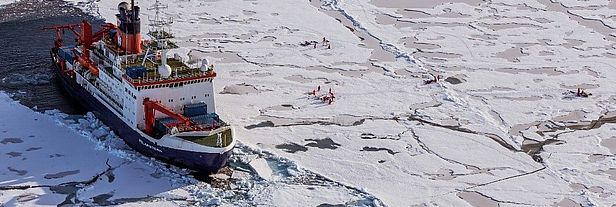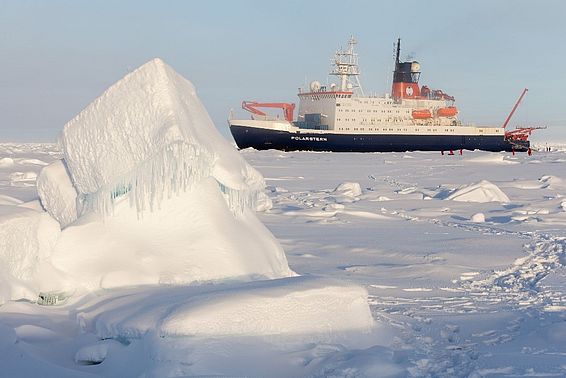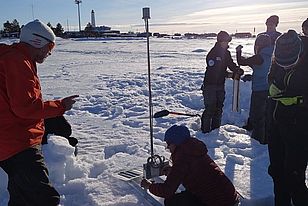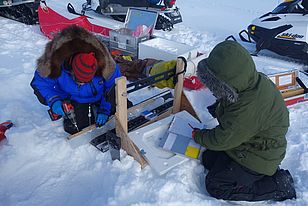A Swiss contribution to MOSAiC: Snowphysics on sea ice
Michael Lehning
Amy Macfarlane
David Nicholas Wagner
2018 - 2022
Cooperation Financing
Energy fluxes are extremely variable across the Arctic due to the dependence on sea-ice thickness and atmospheric- ocean heat transfer. One of MOSAiC’s key objectives is to answer the question: “What are the seasonally-varying energy sources that affect the heat and momentum budgets of the Arctic atmosphere, ocean and sea ice?” Four scientists from the SLF - David Wagner (Leg 1), Martin Schneebeli (Leg 2), Amy Macfarlane (Leg 3) and Ruzica Dadic (Leg 4 ) - will be on board Polarstern from September 2019 to August 2020. They will be responsible for conducting snow measurements in the Sea-Ice group throughout this period and maintaining especially the micro-CT on board.
Unique experiment
Snow is increasingly recognized as a key component in the energy budget of sea ice and plays a crucial role when devising sea ice predictions. The thickness, density and thermal conductivity of snow on sea-ice will be studied in relation to energy transfer. While snow is one of the most insulative materials on earth, there is little data on the effects of thermal resistance of snow over sea ice. The thermal resistance of the snowpack is a key factor for this energy balance, and the exact physical properties of the snowpack will be measured by computed micro-tomography – which has previously never been performed.
The exact physical properties of the snowpack can be reliably measured by simulating the properties based on the 3D-structure of snow. The 3D-structure of snow is measured by X-ray micro-computer tomography. Throughout MOSAiC, a microCT, provided by Scanco Medical, will be installed on board. This will provide the scientists with the ability to conduct quick, high-resolution 3D scans of the snowpack and investigate the snow-sea ice interface. But also the larger scale will be investigated by us. The depth of snow on sea ice is spatially variable at a variety of scales. Wind-driven redistribution results in the formation of both drift features and bedforms - as it does is in all landscapes affected by wind. Similarly, variation in the formation date of sea ice creates different starting dates for accumulation. The topography of these features are measured using a laserscanner with a resolution of about 1 cm.
Part of a large whole
The processes of sea ice absorbing and reflecting energy does not only modulate the Earth’s energy balance, but also affects marine ecosystems and inhabitants of polar regions. The overarching goal of the snow measurements is to characterize snow in support of all MOSAiC inquiries. For example, snow on first-year sea ice and multi-year sea-ice has varying properties and stratigraphy.
These two types of snow are equally important when maintaining arctic ecosystems, with Polar bears heavily relying on the first-year sea ice for hunting and seals building their dens in the ridge-filled multi-year ice.
Challenges
A detailed interdisciplinary plan is necessary as the snow properties are used by many different researchers. For two years,100 researchers have coordinated measurements which contribute to 20 projects .
Trainings
Snow and sea ice measurement training ensures all scientists are conducting the same measurements throughout the year and there is continuity in the dataset. The training weeks gave the ability to understand how to take snow measurements in extreme conditions, with wind-packed snow and large ice crusts.
Polar bear training gave insight into the challenges the researchers are to expect whilst working on the ice. There will be 6 people assigned to polar bear watch at any one time creating a safe area for the scientists to conduct their measurements.







